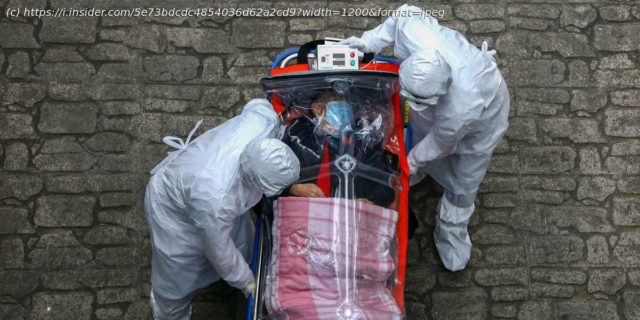Though the first 41 cases were reported December 31, some reporting suggests the virus could have started spreading as early as late November. The large…
Though the first 41 cases were reported December 31, some reporting suggests the virus could have started spreading as early as late November. The large gathering of people at the market may simply have boosted the transmission.
Researchers think the coronavirus originated in bats, then jumped to an intermediary species that passed it to people. It can be spread among humans via respiratory droplets within 6 feet. The virus can also survive for days on some surfaces.
Its pneumonia-like symptoms include fever and coughing.
Wuhan authorities banned the trade of live animals at wet markets soon after the first cases were confirmed. China has also banned the buying, selling, and transportation of wild animals in markets, restaurants, and online marketplaces across the country.
Other viruses in the coronavirus family cause the common cold, pneumonia, and SARS.
The first person to die was a 61-year-old man who was a frequent customer at the Huanan market.
A 61-year-old female tourist in Thailand was diagnosed on January 13. She’d recently spent time in Wuhan. Airports in Hong Kong, Singapore, Thailand, and South Korea also began to screen passengers for fever.
The man left Wuhan and landed at the Seattle-Tacoma International Airport on January 15. Though he initially showed no symptoms, he reported to an urgent care clinic with symptoms of pneumonia on January 19. He was diagnosed with the virus a day later.
The Hubei lockdowns affected an estimated 60 million people, making China’s action the largest quarantine in history.
The WHO’s determination of „global public-health emergency“ has been around since 2005 and had been used five times before.
Those instances were the Ebola outbreak that started in 2013 in West Africa, another one that’s been ongoing in the Democratic Republic of Congo since 2018, the 2016 Zika epidemic, polio emerging in war zones in 2014, and the swine-flu pandemic in 2009.
California’s Santa Clara County found via autopsies that three people who died in their homes on February 6, February 17, and March 6, tested positive for the coronavirus.
Before these cases were identified, officials thought that a fatality reported in Washington state on February 29 was the earliest US death from the coronavirus.
The Wuhan doctor died little more than a month after he sent out the warning message to other doctors, describing a cluster of patients with worrisome pneumonia-like symptoms at the hospital where he worked.
Li caught the coronavirus himself; when he died, he left behind a son and pregnant wife.
After Li’s death, Chinese social media was filled with outpourings of grief and anger. Many posts featured a hashtag saying „We want freedom of speech.“
Both SARS and the new coronavirus come from the same family of viruses, and they share 80% of their genetic codes.
SARS emerged in Guangdong and infected 8,098 people globally over the course of eight months from 2002-2003.
Start
United States
USA — mix A comprehensive timeline of the new coronavirus pandemic, from China's first case...






